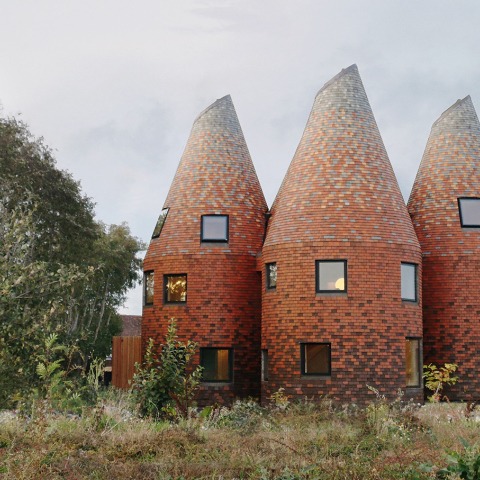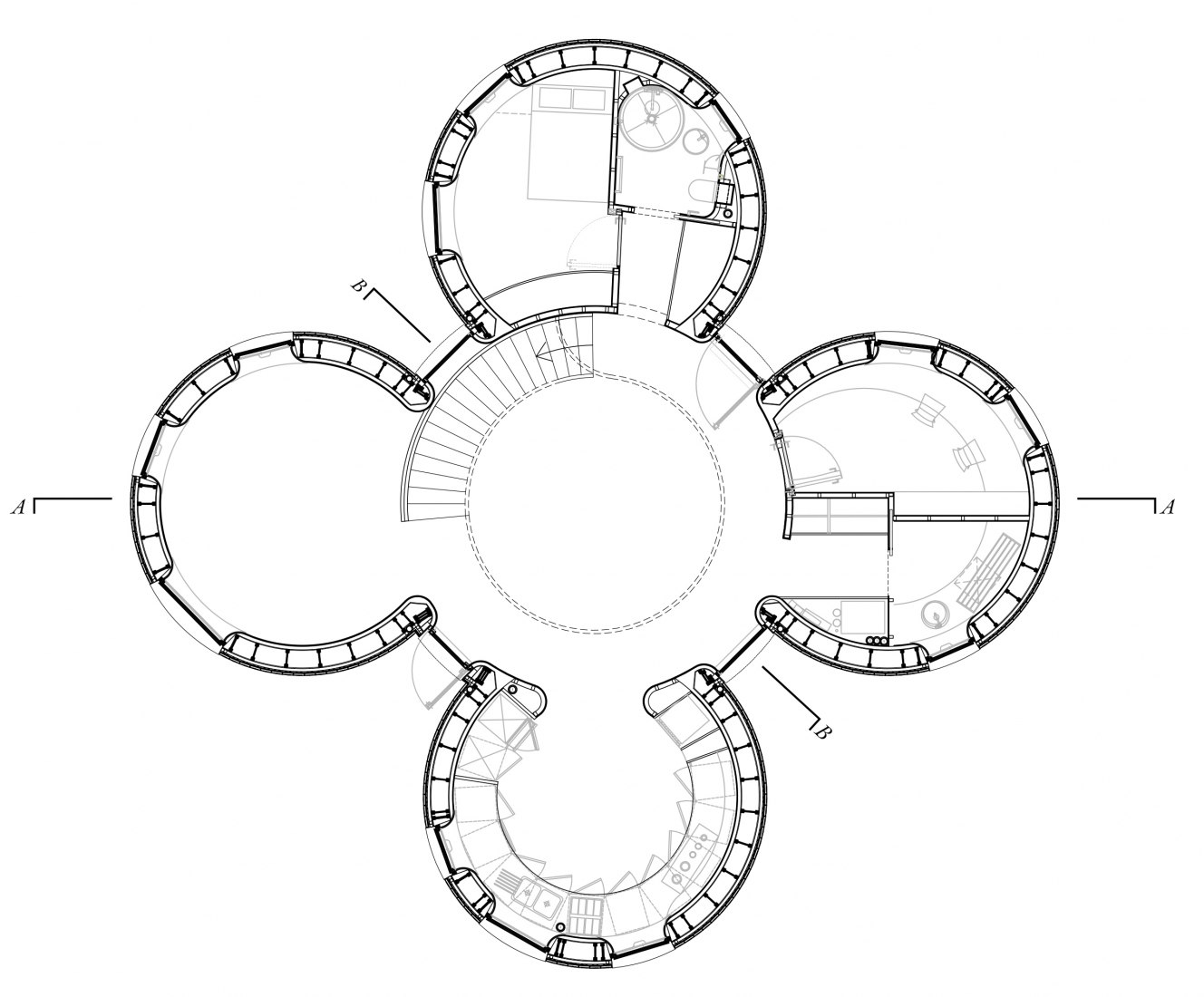ACME director Friedrich Ludewig
In order to make the house suitable for modern family life, ACME had to break some of the usual rules of oast house construction. Typically the towers would be built in a cluster, without any gaps in between. Ludewig's team realised they needed to introduce gaps, to integrate the living spaces with the surrounding garden.
The proportions of the tower roundels were based on traditional oast geometries, but stand slightly apart from one another; creating views inwards and outwards. Each of the oasts house the more private functions of a home such as bedrooms and bathrooms.
The tower between them forms a triple-height central space that opens out to the orchard and forms the heart of the house.
Project description by ACME
The traditional oast house form has been reimagined by ACME to create a new home within the rolling landscape and apple orchards of Kent. Bumpers Oast represents a 21st century riff on a local vernacular derived from the houses used to dry hops as part of the beer-brewing process. Four shingle-clad towers rise up from the natural surroundings, creating an extremely low-energy home with a bold contemporary aesthetic.
The property has been created for a family that moved to Kent 10 years ago and almost bought an oast house at that time They enjoyed the intimacy and idiosyncrasies of living in circular spaces and so were happy to receive a proposal from ACME for a modern interpretation.
Friedrich Ludewig, director at ACME said: “Bumpers Oast has allowed the practice to return to its roots, exploring new residential typologies as we did with Hunsett Mill. The form of this building is radically different to its predecessor and was only made possible thanks to a visionary client and an exhaustive research project into the local vernacular. This house can be both contemporary and proud of its Kent identity.”
The proportions of the tower roundels were based on a traditional oast and they stand slightly apart from one another; creating views inwards and outwards, and housing private functions such as bedrooms, bathrooms, and service spaces. The towers are all connected to a triple-height central space that opens out to an orchard setting and forms the heart of the house.
This was made possible by assembling the frame with thick timber modules, topped by cones manufactured offsite and then craned into position.
Kent-style tiles have been used to create the exterior skin in six shades, slowly fading from dark red at the base to light orange at the tip. These were produced using local craft skills and the tiling work was a huge technical challenge. Every tile above eaves level has been individually cut, with over 41,000 used across the whole facade.
The interior of the roundels is clad in plywood, as a continuous surface for the cylindrical parts, and as overlapping plywood shingles for the roof cones. Curved furniture is built into the rooms where possible to make the best use of the space.
The kitchen needed to feel warm among the harder surfaces downstairs, as the family see it as an important gathering space. Timber was selected for this reason and it has been employed to create bespoke curved units and fronts to follow the line of the wall. A microcement was used to form the counter top to achieve a continuous surface that matches the polished concrete floor.
Each of the bedroom spaces is split level, which creates a play space for the children on the lower level that can later be adapted for study, while the master bedroom is designed with a dressing area in the upper space that opens onto an en suite. Helical stairs lead the family into the conical sleeping spaces, with thin balustrades made of gently curving plywood.
The bathrooms have been created as open-plan niches with no screens, therefore the room size is designed to match its purpose and allow for in-built storage. Microcement is used again to pick up on the materials downstairs and to accommodate the unusual geometry of the interiors.
The downstairs bathroom uses mosaic which echoes the grey tones of the concrete. As it is a north-facing room, matt and gloss finishes have been employed to play with reflections from sunlight as it enters the space. In fact, all window openings have reveals formed by the walls folding into them, which increases the light refraction coming into the rooms.
All bedrooms are on the first floor, and each one has its own private staircase to an upper level in the roof cone, creating a building that is entirely communal on the ground, shared on the first, and full of secluded treehouse-like retreats on the second floor.
The building’s sustainable credentials stem from its heavily-insulated timber frame structure, which breaks from the tradition of solid bricks walls usually used to construct oast houses.
























































